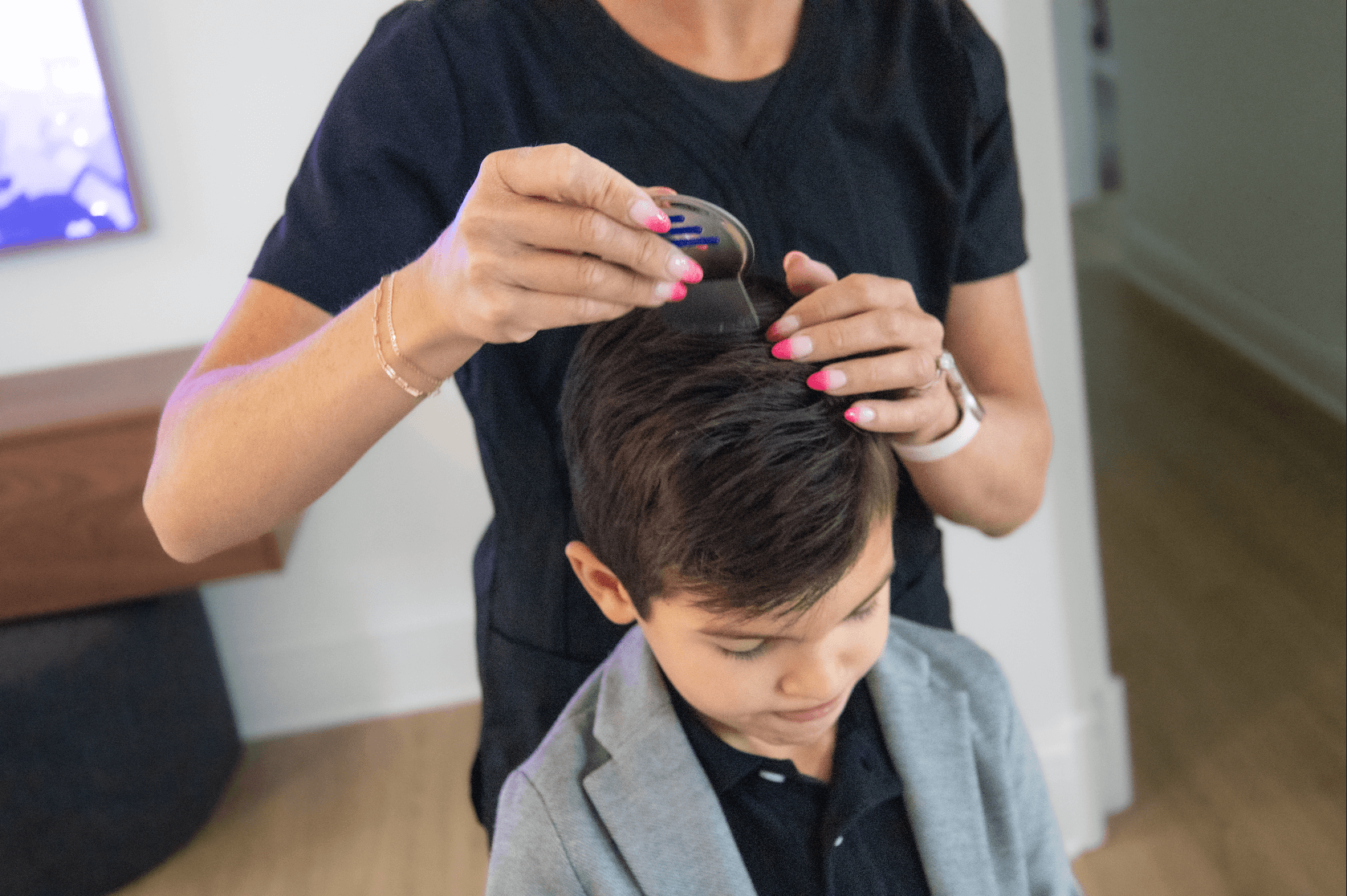
Get A Head Start on Lice Treatment
When lice invade, they can turn your life upside down. While the first step is to ensure that everyone in your household is free from these pesky parasites, taking proactive measures in your home can help prevent future infestations. Especially if you hear of an outbreak in your area or your child’s school, there are several steps to take to remain vigilant.
Understanding Lice Transmission
- Close Contact: Lice primarily spread through direct head-to-head contact. This often occurs during playtime, sleepovers, or even family gatherings.
- Shared Items: Items like hair brushes, hats, and scarves can potentially transfer lice if they’ve recently come into contact with an infested person, although the window is small since lice don’t live long off the scalp.
- Play Areas: Common areas where children play, such as playgrounds and schools, can be hotspots for transmission.
- Signs of an infestation: Common indicators include itching, a crawling sensation on the scalp, and the presence of small white eggs (nits) attached to hair strands.
Preventative Measures for Your Home & Family
While you can’t just spray your house down with magic “Lice, Stay Away” spray, there are some preventative measures you can explore to keep your family safe from infestation.
Regular Hair Checks
- Routine inspections: Conduct weekly checks of your family’s hair, especially after playdates or sleepovers. Look for any signs of lice or nits to catch potential infestations early.
- Using a lice comb: Invest in a fine-toothed lice comb and use it regularly on damp hair to detect any lice or nits effectively.
- Consider different hairstyles: If your child has long hair, consider a braid, or putting their hair up to keep it tighter and less subjective to transfer.
Educate Your Family
- Talk about lice: Have open discussions with your family about lice, their transmission, and the importance of avoiding sharing personal items like hats, brushes, or hair accessories.
- Set guidelines for playdates: Encourage your children to avoid close contact with others during playdates or group activities, especially if they know someone has had lice.
- Designate personal items: Encourage family members to use designated items, such as towels and hairbrushes, to reduce the risk of sharing lice inadvertently.
Recognize When Help is Needed
If you do find yourself facing an infestation despite your attempts to thwart one, don’t fret too much. You can seek professional lice removal services through a lice clinic, where professionals will develop a customized plan to remove every last lice and nit from your scalp.
The Lice Removal Network allows you to find lice treatment centers in your area, giving you the peace of mind you need to deal with a stressful infestation.
Frequently Asked Questions:
Is there a preventative treatment for lice?
While there isn’t a guaranteed preventative treatment for lice, regular hair checks and avoiding close contact with people who have known infestations can help. Staying vigilant and educating family members about lice transmission can also be effective preventative steps.
Can you treat lice before they hatch?
Yes, lice can be treated before they hatch by carefully removing and disposing of nits (lice eggs) using a fine-toothed lice comb or seeking professional comb-out services. This approach prevents eggs from maturing and stops the infestation cycle early.
How do you treat lice in early stages?
If you catch lice in the early stages, don’t miss the opportunity to eradicate quickly by thinking you can handle the infestation yourself. Seeking help from a professional lice removal service can immediately ensure complete treatment and reduce the chances of reinfestation.
